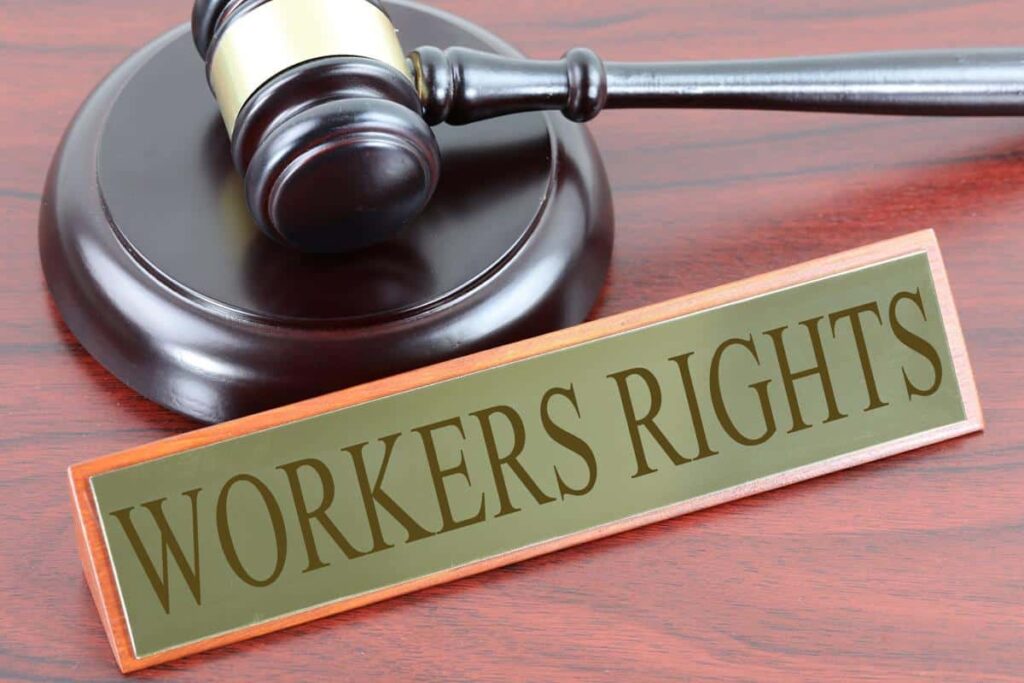 A recent New York Times editorial argues that, despite Donald Trump having run for office as “a champion of American workers and a friend of labor unions,” the Trump administration has consistently favored the interests of employers over the rights of workers.
A recent New York Times editorial argues that, despite Donald Trump having run for office as “a champion of American workers and a friend of labor unions,” the Trump administration has consistently favored the interests of employers over the rights of workers.
Trump Administration Limiting Wages, Overtime Eligibility
In its policies and actions related to the minimum wage, overtime pay, discrimination based on sexual orientation, workplace safety inspections, state regulations, and workers’ collective bargaining rights, the New York Times found that the Trump administration has “pulled back from protecting the rights, safety, and economic welfare of workers.”
For example, during the 2016 campaign for the presidency, Trump said that he supported a $10.00 federal minimum hourly wage. Since taking office, however, his administration has not sought an increase in the current $7.25 minimum hourly wage. Instead, it has taken steps to limit worker pay. In April 2019, the Department of Labor ruled that workers at an unnamed cleaning company and other similar businesses should be classified as contractors rather than employees. As such, they would not be entitled to be paid a minimum wage, have the company pay a portion of their Social Security taxes, or receive overtime pay.
Speaking of overtime, the Trump administration has moved away from the Obama administration’s effort to expand eligibility for overtime pay. Full-time, salaried workers who earn less than a federally defined salary threshold may be entitled to receive overtime pay. While more than 60 percent of workers qualified for overtime pay in the 1970s, Congress’ failure to adjust the threshold for inflation beyond $23,700.00 meant that the share of eligible workers was at 7 percent by 2016. The Obama administration raised the salary line to approximately $47,500.00 and mandated inflation adjustments, but a federal judge in Texas blocked implementation of the rule. Since then, the Trump administration has declined to defend it.
In March 2019, the administration proposed a new threshold of $35,300.00, benefiting about a million more workers, far fewer than the more than four million workers the Obama rule would have benefited. Because the newly proposed rule does not include automatic inflation adjustments, the benefits of the increase to workers would fade away over time, “in effect delivering a windfall to employers.”
The Department of Labor also began a program in 2018 that would allow employers to report their own violations of federal wage laws and avoid penalties by paying their workers the money they are owed. The New York Times Editorial Board argues that the program could incentivize employers to essentially take an interest-free loan by paying workers less now and making amends at a later date. The program also does not require employers to coordinate with state regulators to determine whether workers are entitled to more compensation than the federal minimum under state law, as they are in 29 states.
Discrimination Based on Sexual Orientation
The New York Times also notes that the Department of Justice under Trump has sided with employers in a group of cases that the United States Supreme Court is hearing about the rights of gay and transgender workers. While the Equal Employment Opportunity Commission has determined that federal law bars discrimination based on sexual orientation, the Department of Justice has taken the opposite view, arguing that protections on the basis of sex do not extend to sexual orientation.
Meanwhile, Trump has banned transgender individuals from serving in the military, a ban the Supreme Court recently allowed to go into effect while it is being litigated in other courts.
Administration Failing to Enforce Existing Laws
The New York Times also notes that the Trump administration is failing to enforce existing laws on worker safety by dramatically reducing the number of inspectors at the Occupational Safety and Health Administration (OSHA). As of January 2019, there were only 875 OSHA inspectors on the job, the lowest number in the agency’s history and a 14 percent decline since 2010. According to the National Employment Law Project, the slow rate of new hiring at OSHA is the chief reason for the decline; the agency did not hire any inspectors during the Trump administration’s first full budget year.
This lack of staffing at OSHA means that workplace safety concerns are not being investigated. In Sept. 2018, OSHA failed to send an inspector after a worker lost his left ring finger at an Arkansas chicken processing plant. Instead, the government gave the plant permission the following month to increase the speed at which chickens are processed – after which another employee lost his right index finger. Even then, OSHA did not send an inspector.
Moving to Limit the Power of Unions
Perhaps most troubling are the Trump administration’s consistent moves to limit the power of unions and workers’ ability to join or create them. In June 2018, Trump’s first Supreme Court nominee, Neil Gorsuch, cast the deciding vote in Janus v. AFSCME. The decision was seen as a blow to public-sector unions because it barred the mandatory collection of “fair use” or “agency” fees from workers who choose not to join the unions. Workers can now benefit from the efforts of unions on their behalf without actually contributing to their cost, which may ultimately make it more difficult for unions to provide those benefits. With the confirmation of Trump’s second nominee, Brett Kavanaugh, to replace the departing Justice Anthony Kennedy, there is now a solid pro-business majority on the Supreme Court.
In April 2019, the Department of Labor proposed limits on the ability of workers at franchised businesses like McDonald’s to pursue claims against the franchiser. This joined a similarly restrictive standard proposed by the National Labor Relations Board (NLRB) last year, effectively reversing Obama-era efforts to hold corporations responsible for workers who are not full-time employees.
In May of this year, the NLRB decided that it did not have the jurisdiction over labor complaints by Uber drivers because the NLRB considers them contractors rather than employees. As a result, the government will not enforce protections for unionization drives at Uber and other similar companies, making it harder for them to unionize.
Taking these and other Trump-era moves into account, it may be hard not to conclude, as the New York Times does, that “the administration’s broader pattern of actions and inaction…is sending a clear message to American workers: you’re on your own.”
<< BACK TO BLOG POSTS